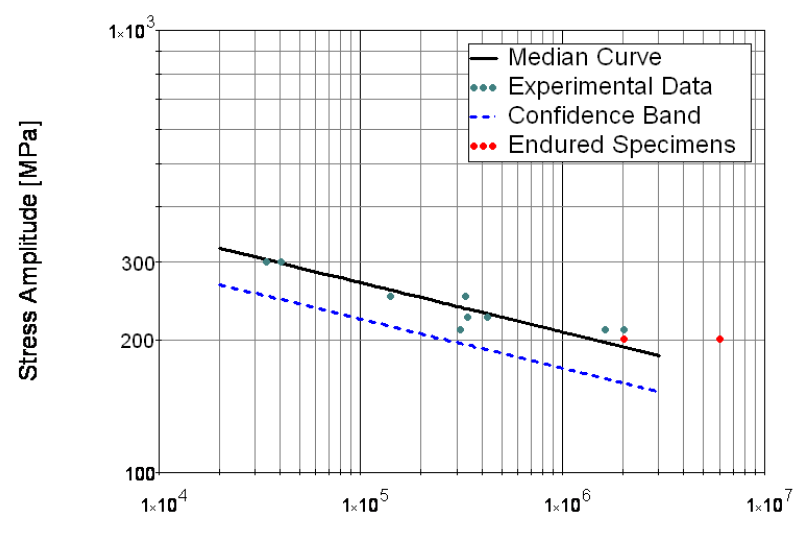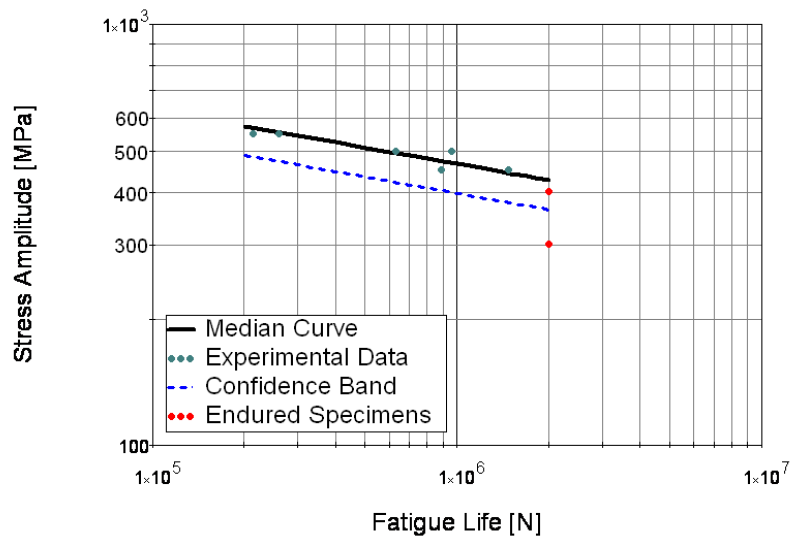Tungsten Properties
Contents
- Figures
- Figure 1. Fatigue data for tungsten Inermet IT180
- Figure 2. Fatigue data for tungsten Densimet D176
- Tables
- Table 1. Resonator applications for tungsten and its alloys
- Table 2. Properties of Inermet IT180
- Table 3. Properties of Densimet D176
Resonator applications
| Table 1. Resonator applications for tungsten and its alloys |
|
| Property |
Applications |
Very high melting temperature
(e.g., 3420°C for pure tungsten) |
- Horns for ultrasonic processing of liquid metals
|
High density
(e.g., 19300 kg/m3 for pure tungsten) |
- Transducer back driver assemblies in order to shorten the overall transducer length and improve static prestress distribution across the ceramics
- Resonators with increased gain (relative to stress) and reduced modal interaction — see Ehlert[1] patent 8,459,122 B2
|
|
Alloys
The following tungsten alloys (Inermet IT180 and Densimet D176) are discussed because some limited fatigue data are available. Other tungsten alloys may possibly provide equal or better ultrasonic performance.
Unless otherwise indicated, the following information is from López and Paez[1] or the manufacturer (Plansee[1] — see data sheet).
These sintered alloys have spherical tungsten grains in a continuous ductile matrix (typically, nickel and iron or nickel and copper) bonding the grains together. These materials are produced by liquid phase powder metal sintering (p. 4 — see details there). "In general, the mechanical properties are strongly influenced by the final tungsten grain size, shape and contiguity. These are, at the same time, influenced by the tungsten content, sintering temperature and time." (p. 5)
All fatigue data are from low-frequency (i.e., non-ultrasonic) axial fully-reversed loading. (p. 6) The specimens were ground and polished although some surface roughness and pores remained. (pp. 24, 38-39) The authors note, "The fatigue response of the material[s] is strongly affected by surface roughness, residual porosity, pore size and pore distribution." (p. ii) Also note the small number of specimens. Thus, care must be used when extending the fatigue results to the general material population.
Inermet IT180
| Table 2. Properties of tungsten Inermet IT180 |
|
Composition
(by weight) |
95% W, 3.5% Ni, 1.5% Cu |
López, p. 1 |
| Hardness (HB30) |
275 |
Plansee, p. 7 |
| Density (kg/m3) |
18000 |
López, p. 27 |
| Young's modulus (GPa) |
308 (López, measured)
360 (Plansee data) |
López, p. 51 |
| Poisson's ratio |
0.28 (based on pure tungsten) |
|
Thin-wire wave speed
(m/sec) |
4140 (based on measured data)
4470 (based on Plansee data) |
Calculated |
Fatigue limit, estimated
(MPa) |
210 |
López, p. ii |
|
Densimet D176
| Table 3. Properties of tungsten Densimet D176 |
|
Composition
(by weight) |
92.5% W, 5.0% Ni, 2.5% Fe |
López, p. 1 |
| Hardness (HB30) |
285 |
Plansee, p. 7 |
| Density (kg/m3) |
17600 |
López, p. 27 |
| Young's modulus (GPa) |
309 (López, measured)
360 (Plansee data) |
López, p. 51 |
Thin-wire wave speed
(m/sec) |
4190 (based on measured data)
4520 (based on Plansee data) |
Calculated |
Fatigue limit, estimated
(MPa) |
425 |
López, p. ii |
|
Wear applications
Tungsten and its alloys have been evaluated to improve fretting wear (e.g., for tips and anvils in ultrasonic metal welding).

